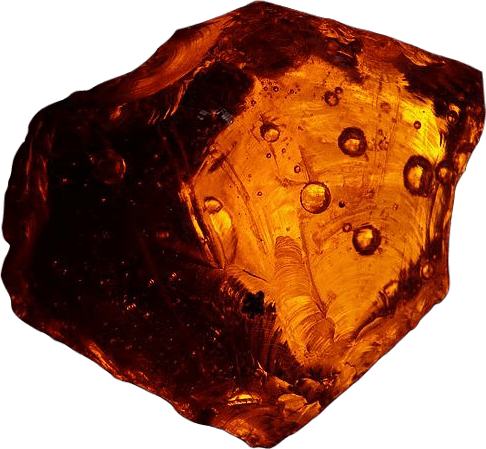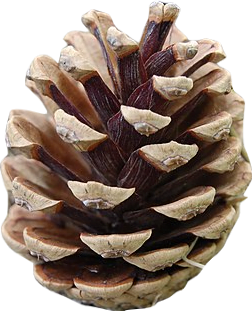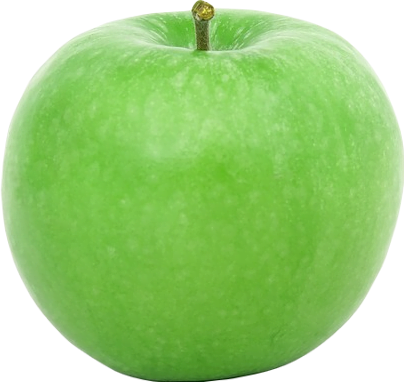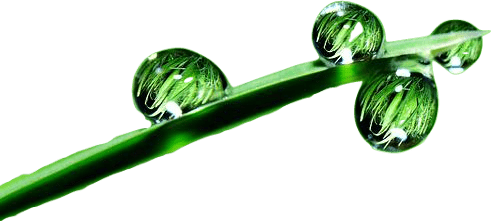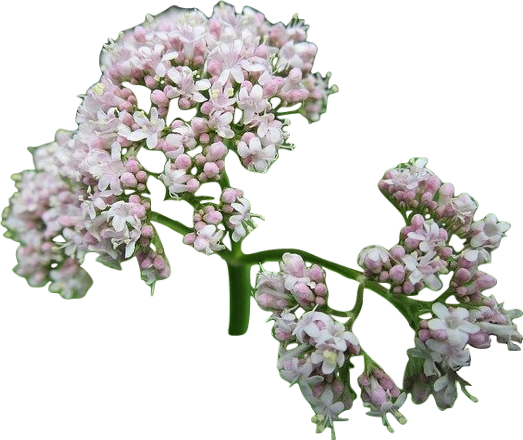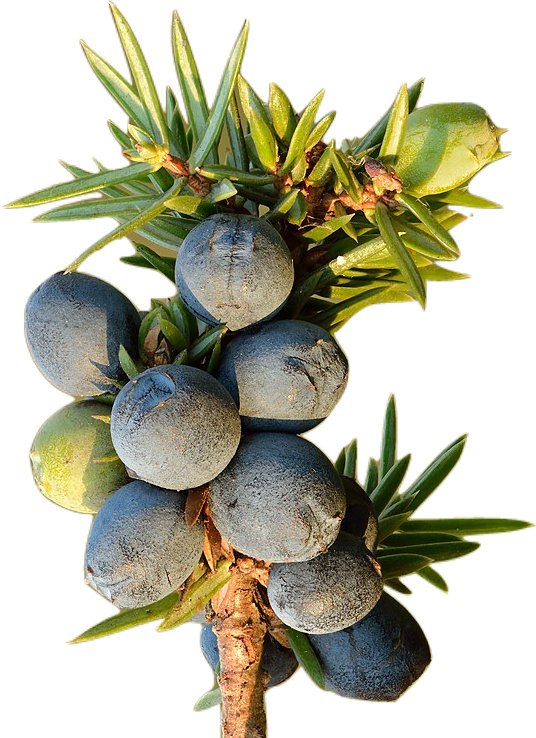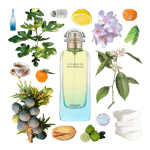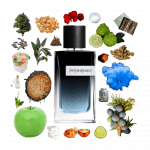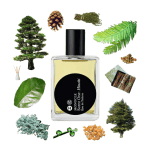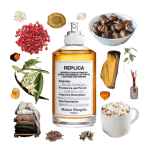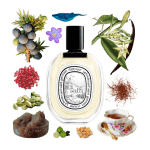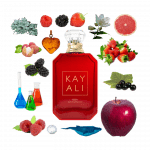What Does Juniper Berry Smell Like?
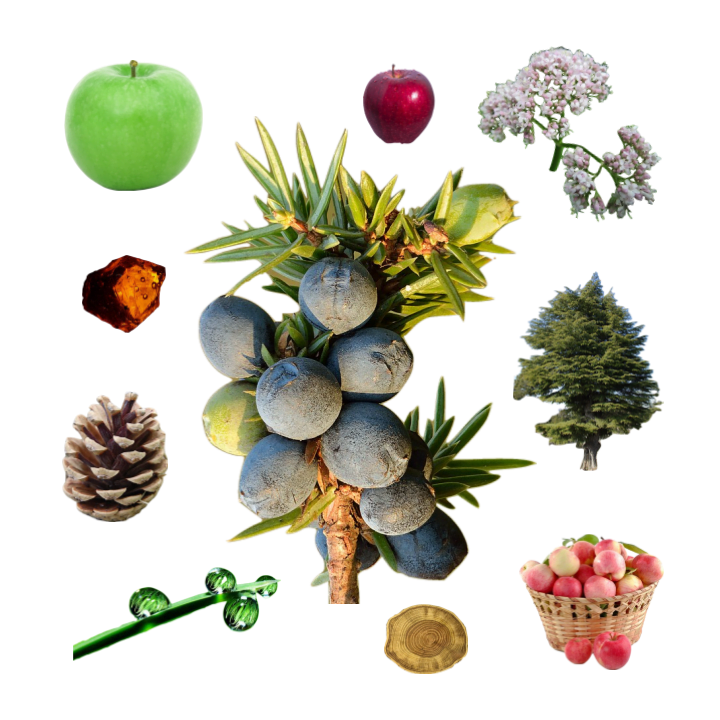
You may be familiar with the smell of juniper berries from walking in the woods in September through December, picking the ripe blue berries and crushing them between your fingers. (Fun fact! Juniper berries aren’t actually true berries. They’re the cones of the juniper tree, an evergreen tree in the cypress family. Weird, right?)
Or you may know the smell of them as the smell of gin. Juniper is the main botanical used to give gin its characteristic bright green pine-y smell.
This is why I, personally, hate gin. It tastes like I’m drinking trees. Lumber should be smelled but not consumed, as I always say.
That being said, I do absolutely love the scent of juniper berries, which is why this is the first perfumery material profile I’m writing on this blog.
The smell of juniper berries can be extracted from the same plant material in three slightly different ways, yielding three different fragrance materials: an absolute, an essential oil, and a CO2 extract. Though all of these smell characteristically of juniper, there are slight differences in their character that influence which one is chosen for a particular fragrance project.
Juniper Berry Absolute
Juniper berry absolute is the softest and most full-bodied material of the bunch. It’s richer, mossier, woodier, warmer, and more subdued than other forms. It lacks the pungency and spicy and peppery facets of the essential oil and CO2 extract. Instead, it is resinous and balsamic. There’s something like the warm sweetness of amber and vanilla here, interwoven with an early dewy forest morning sort of coolness.
There’s a faint yet rich jamminess, like faraway stewing fruits, that sometimes lives in the heart of coniferous woody notes, and juniper berry is no exception.
It’s sticky. The material is sticky, and it smells sticky, too. Like slowly dripping sap sticking between your fingers.
Usually, as the deepest form of a woody scent, an absolute would be well-suited to serve as a base note in a fragrance. Due to juniper’s medium longevity, however, even the absolute tends to work better as a top-to-middle note than as a long-lived base.
Juniper Berry Essential Oil
Juniper berry essential oil is a fresh, pine-y coniferous scent. It is made by steam distillation and is fresh in a calming green way. Juniper berry EO is versatile and refreshing. It reminds me of a walk in a mountainous forest, the kind with giant rocks and fallen trees in the middle of the path you have to scramble over.
The essential oil is resinous, yet not as deep and sappy as the absolute. It’s frosty and cool, just a little minty. Sweetness and bitterness play around the edges of the scent, fresh and green beneath the cool snowy exterior.
There’s a faint fruitiness to it, fresher than that in the absolute, less jammy. It’s a lighter and more faint essential oil than many other woody fresh EOs, but has a calming nature that makes me think of cool winter air.
Unrelated to its scent, some people use juniper berry essential oil in topical products to ease muscle tightness and soreness. The material has a warming effect which some say improves circulation. (Always dilute essential oils before applying them to the skin.)
Juniper Berry CO2 Extract
Juniper berry CO2 extract is the freshest, brightest, and perhaps most true-to-life extraction of juniper berries. This is my favorite juniper berry material for its brightness. There’s a spicy sweetness to it that’s stronger than in the other two forms to my nose. There’s a faint fruitiness, but it’s far more fresh than jammy.
It isn’t at all like rich stewing fruits or jam, but like the faint tangy sweetness of a good gin and tonic. It’s zesty, it’s springy, it’s incredibly refreshing and alive without coming across as cold. It’s radiant and lively, like a lighter, brighter, greener, slightly sweeter sort of pine.
The smell of juniper berry CO2 actually reminds me quite a bit of valerian tincture. It lacks the pungency and pissiness of valerian, but the green herbal brightness is of a similar timbre. It’s one of the most herbal coniferous materials I’ve ever smelled.
The fruitiness in the CO2 is also quite bright to me, and makes me think of apple. Like a green apple note in an air freshener (or applied to a charger cable). Seriously, this is so apple-y that I’m going to try using it in an apple accord. It’s a fresh, bright, perfume-y apple smell that’s honestly not unlike the smell of those Apple charger cables. I asked my boyfriend to smell the CO2, and, among other things, he described it as “craft store apple.”
And there’s a grassiness to it all. This isn’t a vetiver sort of dried grass scent. No, this is the bright smell of freshly cut damp grass in summer, that olfactory scream the stalks let out as they’re cut to warn other plants of danger. (Yes, this is a thing. Or, at least, a scientific theory.)
Tart apples, valerian, and freshly cut grass. Those are the things juniper berry reminds me of the most, and the CO2 extract is the brightest form of it. The essential oil and absolute are woodier, jammier, more woody and aloof.
Bright, Herbal, Pine-y
Juniper berry is a vibrant scent with many uses. It’s the main part of the juniper plant used for its aroma. If you see “juniper” listed as a note, it’s probably distilled from extracted from juniper berries. There are also, however, fragrance materials that are sometimes distilled from juniper needles as well. The only ones I’m seeing on the market right now are juniper needle essential oils, though absolutes and CO2 extracts could hypothetically also be possible.
Culturally, juniper is a scent that feels very calming to many people. This is true of many cool coniferous woody scents, but the herbal and fruity nuances of juniper make it a unique offering among others. Essential oils enthusiasts love diffusing juniper to reduce emotional stress.
Because of its valerian-like herbal attributes and fresh apple-y and grassy tones, I find juniper more challenging to blend with other notes than other coniferous scents. That’s not to say it can’t be done, though, and the reward for the effort is rich.
Right now I’m using juniper berry CO2 extract mixed with lime essential oil and rosemary essential oil to make a gin-and-tonic-scented beard oil for my gin-loving lumberjack of a boyfriend. The juniper berry CO2 is our favorite material out of the bunch. He’s always asking to get a whiff of it on its own. And it’s definitely the material most like the smell of gin, clear and sparkling and bright.
Regardless of whether it’s an absolute, essential oil, or CO2 extract, juniper berry is a fresh woody scent that is best used as a top to middle note. It lacks the longevity of some other fresh woody materials, such as those made of cedar and pine, but it has a very distinct character, with hints of fresh fruitiness, herbs, and grass. It’s a lovely calming green note great for lovers of forests and gin alike.
Juniper Perfumes and Colognes
Fragrances with notes of juniper include:
- Un Jardin en Méditerranée Eau de Toilette by Hermès
- By the Fireplace Eau de Toilette by Maison Martin Margiela
- Y Eau de Parfum by Yves Saint Laurent
This post is the first in a series of short analyses of various fragrance materials, both botanical and aromachemical. As I learn perfumery, I’m writing these up for my own personal note-taking purposes, but I hope they’re useful for someone else out there too. Whether you’re an amateur perfumer yourself researching materials or are just trying to figure out what the notes in a perfume or cologne are, I hope you enjoy!
